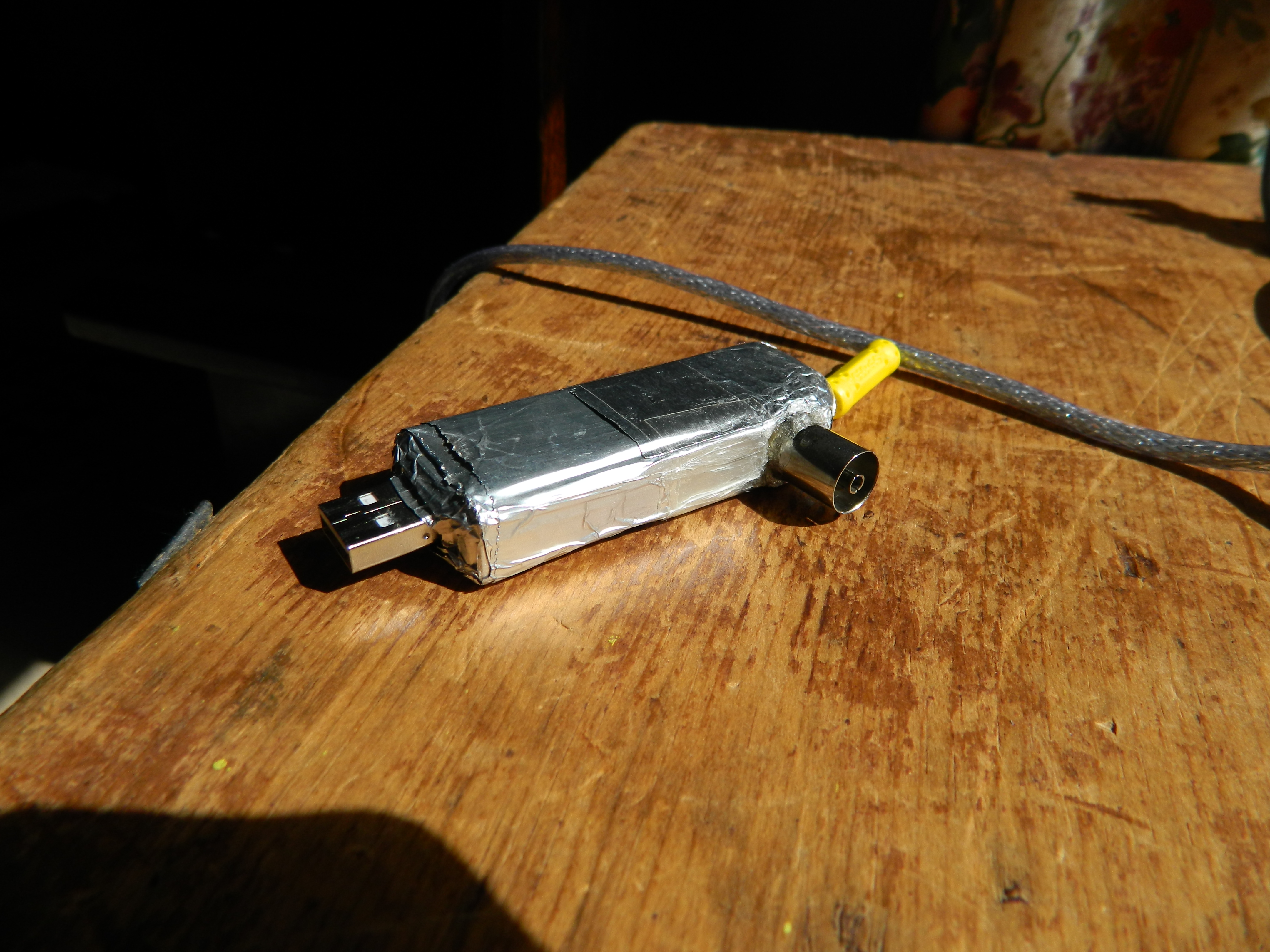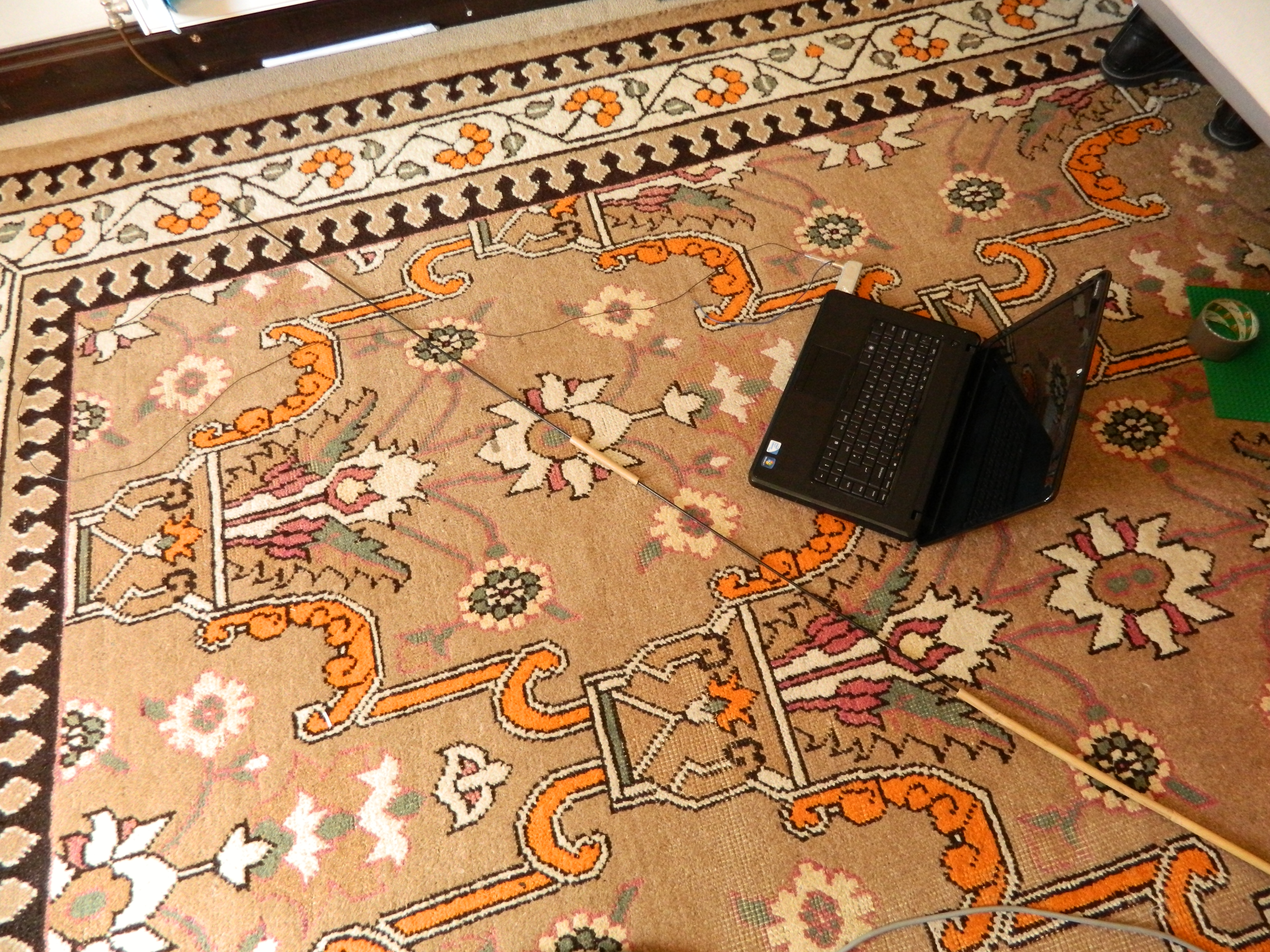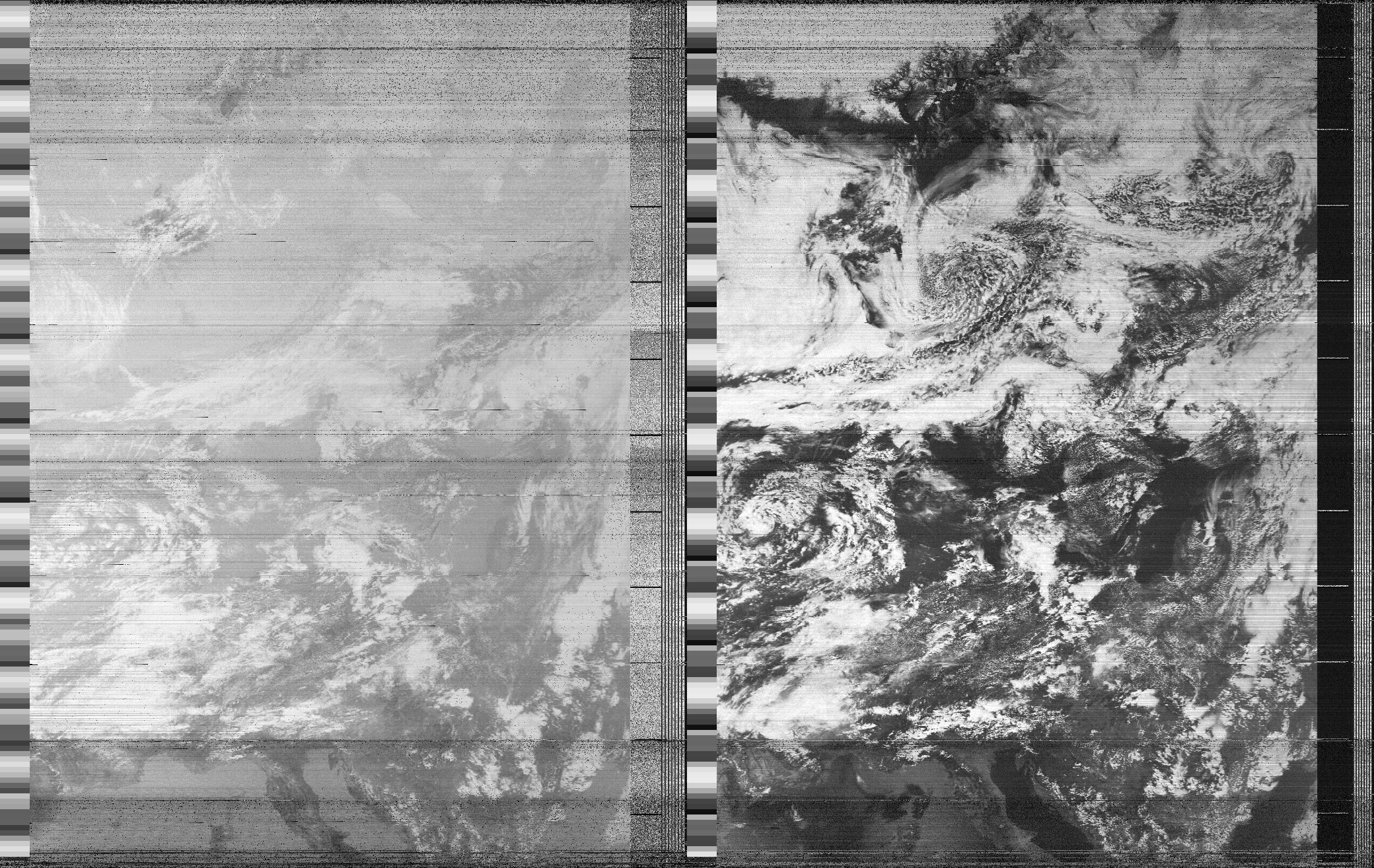Downloading NOAA Satellite Images Cheaply and Easily
by sdobbie in Circuits > Electronics
111585 Views, 233 Favorites, 0 Comments
Downloading NOAA Satellite Images Cheaply and Easily

This will show you how to download weather satellite images really cheaply and easily using easy to obtain parts.
For this you will need:
RTL SDR USB software defined radio. It costs around 20 pounds.
get it here:http://www.ebay.co.uk/itm/140803976327?ssPageName=STRK:MEWNX:IT&_trksid=p3984.m1497.l2649
I have discovered a problem with this radio. It does not pick up weather satellites at all any more but it still picks up everything else very well. It seems to lose sensitivity to the signals over time.
SDR Sharp. You can search Google for this.
Audacity
APT Decoder
this is a free program.
There are many places to get it
2 metre long piece of wire
long pole to hold the wire
A small laptop computer that you can hold for 15 minutes at a time.
You can connect your radio to a USB extension cable and just hold the radio in your hand rather than having a laptop under your arm. If you do this, the USB cable sometimes causes noise and signal loss so it is best to have the radio plugged directly into the laptop.
Finally, if you have really enjoyed this or found it useful, please consider making a tiny donation trough Paypal here:
http://sdstuff.net76.net/Donate.html
For this you will need:
RTL SDR USB software defined radio. It costs around 20 pounds.
get it here:http://www.ebay.co.uk/itm/140803976327?ssPageName=STRK:MEWNX:IT&_trksid=p3984.m1497.l2649
I have discovered a problem with this radio. It does not pick up weather satellites at all any more but it still picks up everything else very well. It seems to lose sensitivity to the signals over time.
SDR Sharp. You can search Google for this.
Audacity
APT Decoder
this is a free program.
There are many places to get it
2 metre long piece of wire
long pole to hold the wire
A small laptop computer that you can hold for 15 minutes at a time.
You can connect your radio to a USB extension cable and just hold the radio in your hand rather than having a laptop under your arm. If you do this, the USB cable sometimes causes noise and signal loss so it is best to have the radio plugged directly into the laptop.
Finally, if you have really enjoyed this or found it useful, please consider making a tiny donation trough Paypal here:
http://sdstuff.net76.net/Donate.html
The Setup

I have modified my software radio that I bought by removing the existing connector and attaching a coaxial socket instead. I also covered it in foil which can help block noise in some cases.
You simply have to secure the wire to the central pin of the coaxial connection by soldering or making up your own connection. The other end of the wire is attached to the other end of the pole a bit like a fishing rod. Once you have the software at the right frequency, you close the laptop, hold it in your left arm and hold the antenna pole with your right hand until you can hear the satellite.
To set up the software so it detects the radio, you need to copy rtlsdr.dll into the same directory as SDR Sharp.
A better guide will be included with your radio or you can find it online.
In SDR Sharp, you have to set the front end option to your software radio. In my case it is RTL SDR/RTL 2832U.
You have to uncheck filter audio and you must set the bandwidth to 36 KHz. The mode should be set to NFM and the squelch off.
I find that my radio picks up NOAA 18 the best so go here to track it:
http://www.n2yo.com/?s=28654
It struggles with other satellites because there are noise spikes near the NOAA 19 and NOAA 15 frequencies. These spikes may be caused by the radio itself or USB power supply noise.
You simply have to secure the wire to the central pin of the coaxial connection by soldering or making up your own connection. The other end of the wire is attached to the other end of the pole a bit like a fishing rod. Once you have the software at the right frequency, you close the laptop, hold it in your left arm and hold the antenna pole with your right hand until you can hear the satellite.
To set up the software so it detects the radio, you need to copy rtlsdr.dll into the same directory as SDR Sharp.
A better guide will be included with your radio or you can find it online.
In SDR Sharp, you have to set the front end option to your software radio. In my case it is RTL SDR/RTL 2832U.
You have to uncheck filter audio and you must set the bandwidth to 36 KHz. The mode should be set to NFM and the squelch off.
I find that my radio picks up NOAA 18 the best so go here to track it:
http://www.n2yo.com/?s=28654
It struggles with other satellites because there are noise spikes near the NOAA 19 and NOAA 15 frequencies. These spikes may be caused by the radio itself or USB power supply noise.
Downloading the Images

To begin, you need to have audacity open along with SDR Sharp. In Audacity, the recording device must be set to stereo mix and the sample rate set to 11025. Start off with the laptop on the ground and the radio set to 137.9125. As the satellite approaches, move the antenna about until the signal begins to show and click in the middle of the signal trace on the waterfall spectrum as it shows on SDR Sharp. Press record in Audacity, close the laptop and hold up the aerial for the duration of the pass. You will have to move it around at times. The frequency will also shift as the pass progresses so you may have to open the laptop and adjust the frequency slightly and resume. You will know you are getting the signal right when you hear a clear high pitched tone with a clear tick tock sound on it. I have added a sample for you here so you know exactly what to listen for. You have to set the volume in Windows to about half. Also, if you use headphones to listen as the satellite comes over, you will be able to hear it more clearly.
Downloads
Decoding and Results
The results will vary depending on weather conditions. This picture I have added is the best one I have ever got using this method on a nice day with broken cloud. To decode, you need to open APT Decoder and load your wav file. It MUST be 11025 Hz sample rate. It does not matter what bit depth the wav is. Just use 32 bit to ensure best quality.
The ideal setup for this would be a roof mounted quadrifilar helix antenna connected to a proper satellite receiver or your software radio but this is the expensive option.
The ideal setup for this would be a roof mounted quadrifilar helix antenna connected to a proper satellite receiver or your software radio but this is the expensive option.